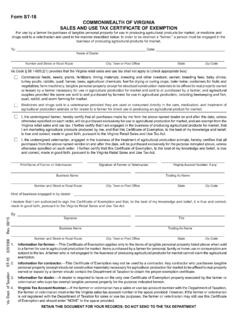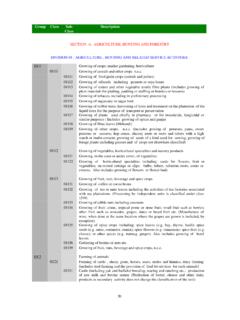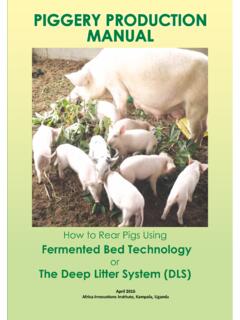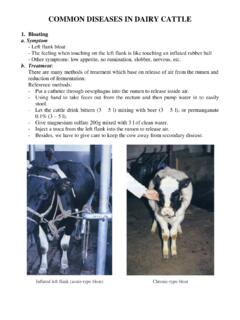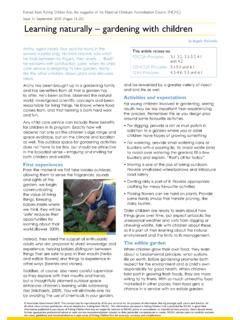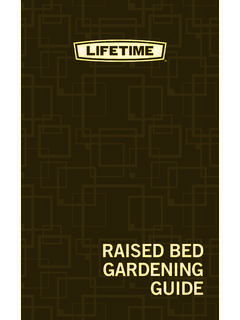Transcription of Soils Of NZ: By Region
1 Soils Of NZ: By Region Region Name/ Classification (NZ Soil Description Features Landscape Distribution and Associated Soil Picture Soil Type and USDA) Position Soils Canterbury Lismore Shallow and NZ: Pallic Orthic 0 - 20cm: Very dark greyish brown, silt Lismore Soils are formed from Occupies extensive The most extensive soil Stony Silt Loam Brown Soil loam, fine and very fine polyhedral gravelly glacial outwash with a gently sloping fans. occupying the Canterbury structure. variable depth of silty loess Plains. USDA: Typic deposit at the surface. The soil is Dystrustept 20 - 30cm: Brown to dark brown, stony well drained and has moderate to Forms an association of Soils on silt loam, weakly developed fine and very rapid permeability.
2 The south bank of major rivers - fine polyhedral structure. as loess depth increases Without irrigation, the soil is very Lismore Soils merge into 30 - 50cm: Dark yellowish brown, very droughty and is used for Chertsey Soils then into Hatfield stony sandy loam, weakly massive extensive pastoral farming and and Barrhill Soils . structure. Pinus Radiata plantations. Grades into Ruapuna Soils at 50 - 120 cm: Dark brown to dark greyish With irrigation the soil is used for 880 mm of annual rainfall. brown weakly cemented very stony loamy intensive pastoral farming (dairy, sand layers alternating with olive loose deer, sheep) and for permanent very stony sand layers. horticultural crops (grapes, nut trees).
3 Canterbury Tekoa Steepland Soil NZ: Allophanic 0 - 18 cm: Very dark greyish brown, silt Well drained, friable, acid Soils Occurs on steep land Occurs on the west of the Firm Brown Soil loam, fine to extremely fine polyhedral with variable depth and derived from extensive frontal mountain structure. stoniness. Mainly used for sheep greywacke rocks, ranges. Very similar soil to USDA: Andic farming but land with moderate with rainfall of 900- Bealey steepland Soils . Dystrudept 18 - 35 cm: Yellowish brown, stony silt slope angles has a high potential 1500 mm and loam, fine to extremely fine polyhedral for forestry. elevation of 450- Grades into Hurunui Soils at structure. 1400 m. lower rainfall and into Kaikoura Weed invasion and lack of soil Soils at higher elevation.
4 35 - 55 cm: Strong brown stony silt loam, nutrients are major limitations to fine to extremely fine polyhedral pastoral farming. A significant are structure. of Tekoa Soils occur under beech forest within the conservation 55 - 90 cm: Yellowish brown; stony silt estate. loam, weakly developed coarse polyhedral structure. Page 1 of 43. Region Name/ Classification (NZ Soil Description Features Landscape Distribution and Associated Soil Picture Soil Type and USDA) Position Soils Canterbury Templeton Silt Loam NZ: Typic 0 - 25 cm: Very dark greyish brown, silt Lismore Soils are formed from Occupies the older Occurs adjacent to large rivers Immature Pallic loam, fine and very fine polyhedral greater than 45 cm of fine- part (3000 - 10 000 on the Canterbury Plains.)
5 Soil structure. textured post-glacial alluvium. years BP) of the post- Commonly occurs in close The soil is moderately well glacial fan surface. association with shallow and USDA: Udic 25 - 35 cm: Olive brown to light olive drained and has slow stony Eyre Soils . Haplustept brown, silt loam, weakly developed fine permeability in some subsoil and very fine polyhedral structure, many horizons. Grades into imperfectly drained inclusions of topsoil in worm burrows. Wakanui Soils in hollows and Without irrigation, the soil is wherever water tables rise. 35 - 55 cm: Light olive brown, fine sandy droughty and is used for pastoral loam, weakly massive structure. farming and mixed cropping. 55 - 70 cm: Light olive brown, mottled, With irrigation the soil is used for silt loam, firm, massive.
6 Intensive pastoral farming and cropping and for a wide range of 70 - 200 cm: Olive loose very stony sand. horticultural crops. Canterbury Temuka Clay Loam NZ: Typic Orthic 0 - 20 cm: Very dark greyish brown, clay Temuka Soils are formed from Occurs in former Grades into imperfectly drained Gley Soil loam, coarse to fine polyhedral structure. thick deposits of fine-textured swamps on the older Wakanui Soils on swamp alluvium. The soil is poorly part (5000 - 10 000 margins and into Waimairi peat USDA: Mollic 20 - 28 cm: Greyish brown, clay loam, drained and has slow years BP) of the post- Soils in low areas where water Endoaquept coarse to fine polyhedral structure, many permeability in subsoil horizons glacial fan surface.
7 Tables are highest. inclusions of topsoil in worm burrows. when wet but has rapid permeability when cracks open in 28 - 50 cm: Grey with yellowish brown dry conditions. mottles, clay loam, very coarse polyhedral structure. The soil is used mainly for pastoral farming and a small 50 - 70 cm: Grey with yellowish brown proportion is used for mixed mottles, clay loam, extremely coarse cropping. prismatic structure. 70 - 85 cm: Very dark greyish brown Page 2 of 43. Region Name/ Classification (NZ Soil Description Features Landscape Distribution and Associated Soil Picture Soil Type and USDA) Position Soils Canterbury Timaru Silt Loam NZ: Mottled Fragic 0 - 16 cm: Dark greyish brown, silt loam, Timaru Soils are formed from Occupies the lower Occurs on the eastern part of Pallic Soil fine and very fine polyhedral structure.
8 Thick deposits of silty loess. The rainfall (<750 mm the extensive downlands of soil is imperfectly drained, with rainfall per annum) North Otago and Canterbury. USDA: Udic 26 - 28 cm: Light olive brown to dark poorly drained inclusions on flat part of easy rolling to Haplustept greyish brown, silt loam, weakly ridge tops. Fragipans (dense hilly downlands. Grades into more poorly drained developed medium and very fine subsoil horizons that inhibit root Claremont and Opuha Soils at polyhedral structure, many inclusions of growth and drainage) occur at 40 higher rainfall. topsoil in worm burrows. to 80 cm from the soil surface. 28 - 40 cm: Light yellowish brown, silt The soil is droughty and is loam, common mottles, weakly susceptible to wind and rill developed medium to coarse polyhedral erosion when cultivated.
9 It is used structure. for pastoral farming and mixed cropping. 40 - 60 cm: Pale olive, intensely mottled, silt loam, firm, medium to coarse East Cape Kiore Hill Soil NZ: Typic Orthic 0 - 12 cm: Dark greyish brown gritty silt The soil is formed from loose- Hill country. The Soils occur throughout Brown Soil loam. jointed or 'frittered' mudstone and Poverty Bay. A wide range of typically slumps easily, giving the Soils occur on loose-jointed USDA: Typic 12 - 30 cm: Yellowish brown to light olive landscape an irregular 'humpy' mudstone because of erosion. Dystrochrept brown gravelly silty clay loam with 10% look, so typical of the East Coast Close-jointed mudstone has less weakly weathered angular mudstone of the North Island.
10 Erosion and its landscape has fragments. more slips rather than slumps. The Soils tend to be 'fertile' with 30 - 55 cm: Light olive brown gravelly high levels of exchangeable Locally, bentonic mudstone is silty clay loam with 10% weakly cations (calcium, magnesium, extremely unstable. Soils weathered angular mudstone gravels. potassium and sodium) and formed from it are clayey and reserves of potassium and have grey colours in the 55 - 10 cm+: Olive yellow gravelly clay magnesium. Limitations to subsoils indicating poor with 50% mudstone weakly weathered intensive agricultural therefore drainage. angular mudstone gravels. are not fertility but erosion and erosion potential and slope.
